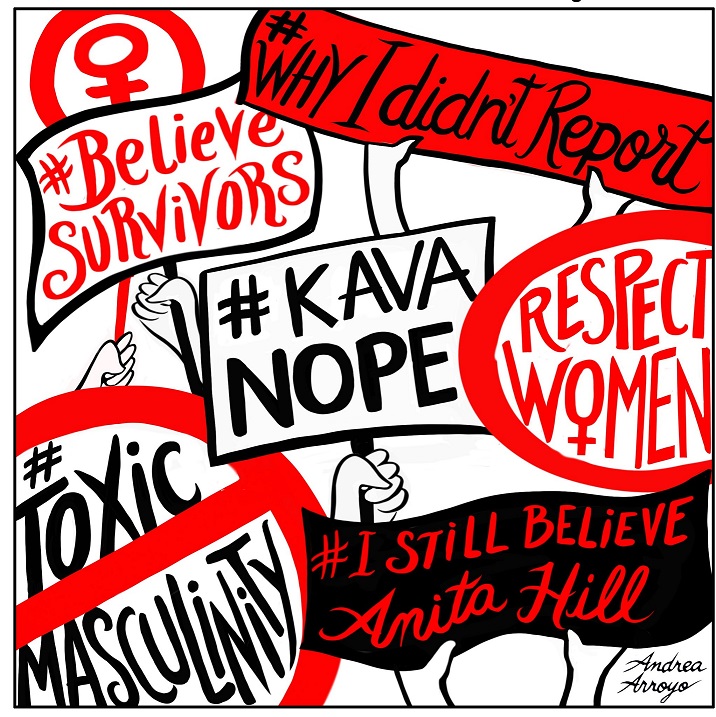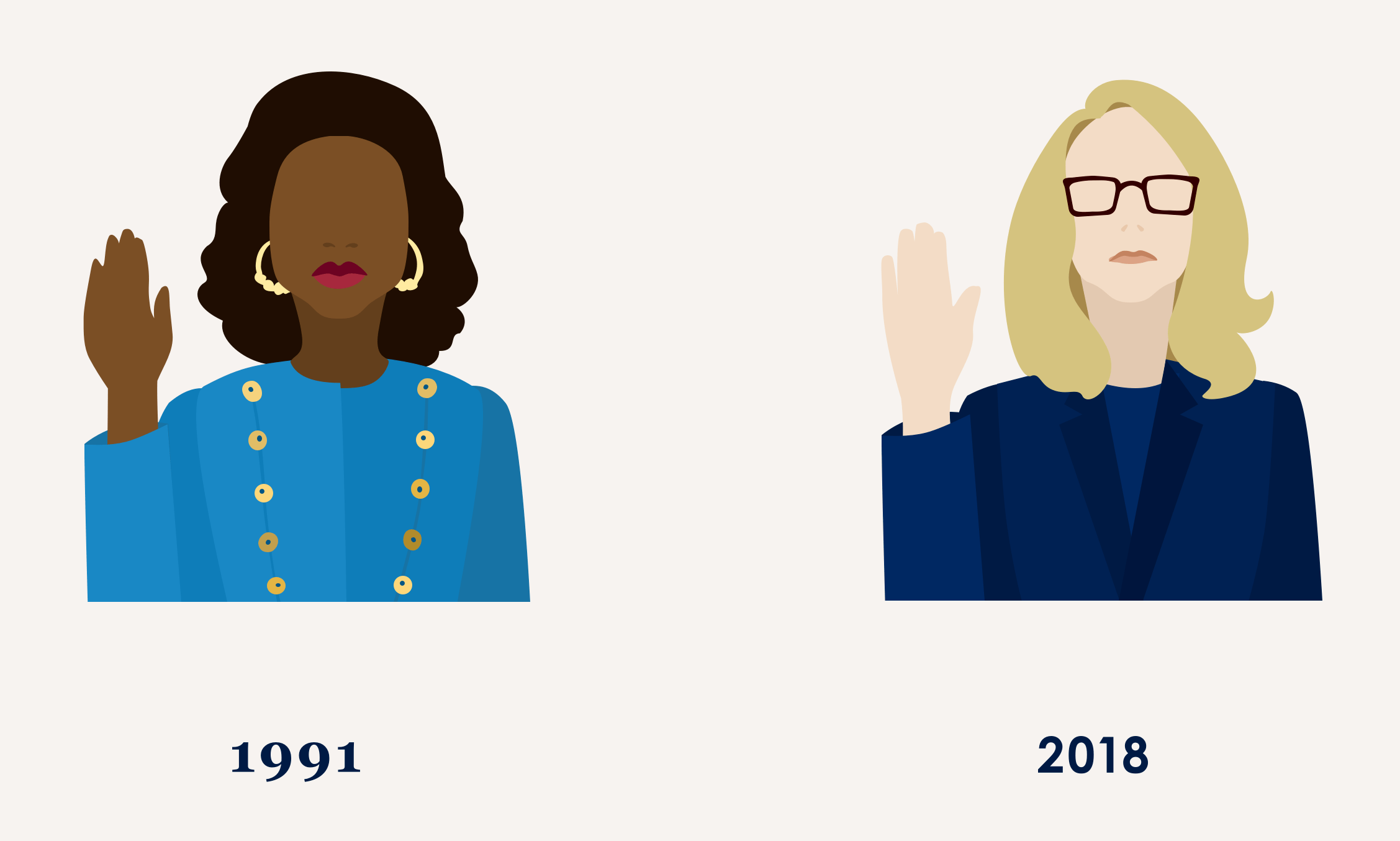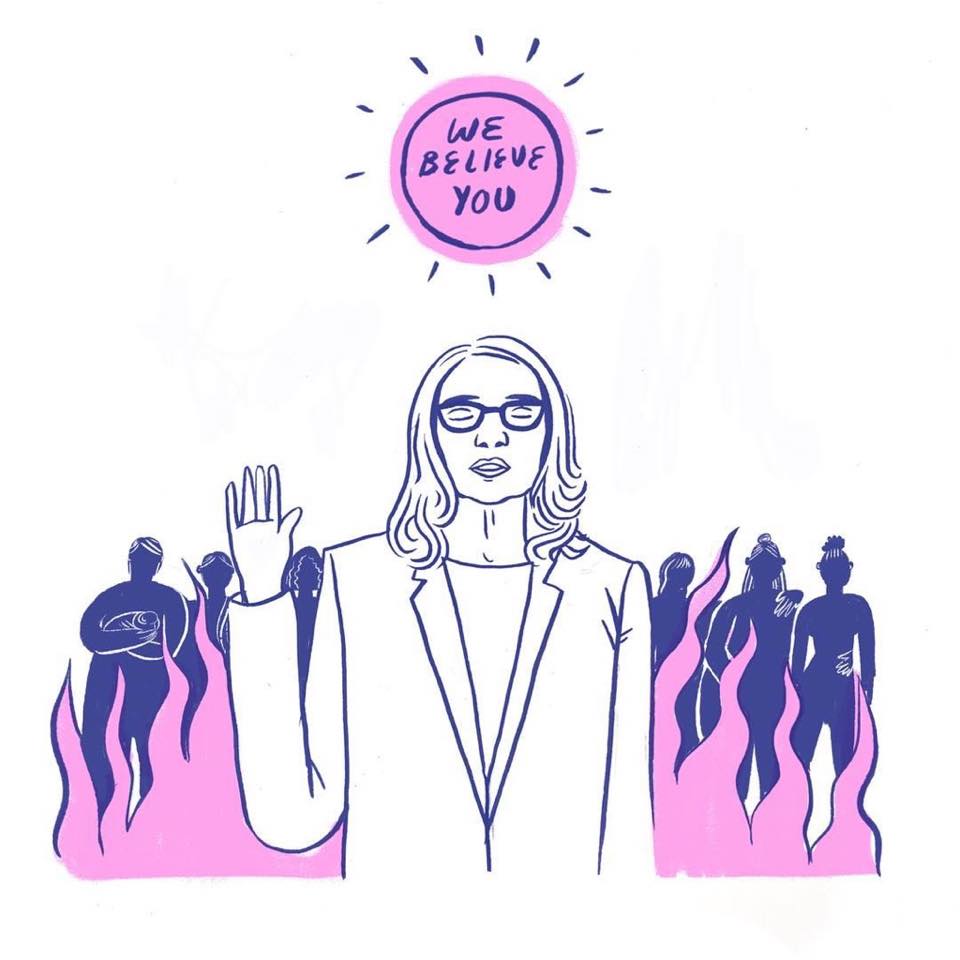On September 27th, I watched Christine Blasey Ford testify in front of the Senate Judiciary Committee in my mostly darkened office. The day was already gray, and only my small desk lamp and computer screen provided any sort of illumination. I watched as Dr. Ford described the sexual violence she experienced as a teenager, as she repeatedly apologized for not remembering every detail, as she politely asked for caffeine and then a break, and as she patiently and scientifically described the ways that this trauma imprinted on her brain. When I took my own break and walked over to a coffee shop to grab a drink, my eyes burned thinking about what Dr. Ford remembered most vividly—their laughter, “two friends having a really good time with one another.”
I then watched Judge Kavanaugh’s testimony. I watched as his face twisted and got red, his body seemingly unable to contain his anger, fear and defiance. I was immediately struck by his rage and how clearly he felt entitled to it. Writer, social justice facilitator, and healer adrienne marree brown reflected on this in a blog post titled “Dr. Ford’s Dignity” when she wrote, “Kavanaugh has been marked by his actions in public, his dirty hands showing, his rageful face showing precisely how a boy who sexually assaults a girl while he is drunk looks when he grows up. his true self showed today, and every survivor who saw his face, who heard Christine Blasey-Ford say she was once scared he might kill her, recognized him as a perpetrator.”
For many of us who recognized Kavanaugh as a perpetrator, his confirmation a little over a week later, was not surprising, though still devastating. Just as so many things that have happened over the past few years have been not surprising, though still devastating.

In our own work, we must continue to show up for survivors. From Thursday, the day of the hearing, to the Sunday after, RAINN saw a 338% increase in hotline calls. While advocacy and direct services continue to be vital for the communities we serve and the survivors who come to us, it’s equally important to commit to primary prevention work.
At the Action Alliance, we define primary prevention as a set of practices and values that seek to shift attitudes, behaviors and norms that support and perpetuate the root causes of violence. Primary prevention uses anti-oppressive frameworks and understands that systems of oppression such as patriarchy and white supremacy are at the heart of sexual and intimate partner violence.
While devastating, the Kavanaugh hearing and Dr. Ford’s testimony provide us with clear examples of rape culture, one that normalizes and rationalizes sexual violence as inevitable and a part of “natural” human behavior rather than understanding it as structurally and culturally created and sustained. An understanding of rape culture allows us to see how the violence Dr. Ford experienced, that so many survivors experience, goes beyond what happened one summer night in a Maryland suburb. And when we use primary prevention practices we are able to prevent instances of violence and dismantle the culture that allows this violence to happen.
While devastating, the Kavanaugh hearing and Dr. Ford’s testimony provide us with clear examples of rape culture, one that normalizes and rationalizes sexual violence as inevitable and a part of “natural” human behavior rather than understanding it as structurally and culturally created and sustained.
With a primary prevention lens, we can see how misogyny and privilege build a culture where boys feel entitled to a young girl’s body, where they do not take her struggle seriously, where they in fact find the situation amusing, even fun. We see how this phrase that flows so easily out of some people’s mouths, “boys will be boys,” reinforces the idea that harm is inevitable and boys, specifically white boys, should not or cannot be held accountable for their actions. It is rape culture that sends the message to survivors that speaking publicly about the violence they have experienced is harmful or unfair to their perpetrator; it frames this unveiling of violence, abuse and trauma as a “scary time for boys” rather than the reckoning that it is.
We can better understand the differences in Dr. Ford’s and Kavanaugh’s demeanors on September 27th with a primary prevention lens because we understand how gender roles and stereotypes police behavior. It was necessary for Dr. Ford to be polite, courteous, and controlled because she is a woman and to be too emotional, angry, or frustrated would make her dramatic, hysterical and thus unbelievable. While Dr. Ford was dignified, Kavanaugh, as a man, was outraged; even, arguably, in excess. What are we teaching young women and trans or non-binary people when some are entitled to express their emotions to a point of a menace, while others must keep even the deepest parts of their grief contained and quiet?

With a primary prevention lens, we can better unpack how the public perceived Dr. Ford in comparison to Anita Hill, a black woman who testified in front of an eerily similar Senate Judiciary Committee in 1991. Because with this lens, we know that racism is also a root of rape culture and sexual violence and that when a CNN pundit described Dr. Ford’s testimony as more resonant because she projected vulnerability while Anita Hill projected strength and poise, we know this is connected to racial stereotypes about black women.
The Kavanaugh hearing and subsequent swearing in prove the necessity for a deep culture shift. We want to live in a world where people understand and practice consent, where sexuality is joyful, where boundaries are respected, where open communication is expected. In this world, those who have harmed are held accountable and these harmful behaviors are transformed and changed. In order to get there, we must commit to violence prevention. We must invest in and value prevention trainings and education; community building, organizing and connection; and the work of people and organizations in other movements that fight for justice and liberation (National Network of Abortion Funds and SisterSong). As organizer and educator Mariame Kaba reminded us on twitter in 2017, “Let this radicalize you rather than lead you to despair.”
Thank you, Dr. Ford.
Thank you, Anita Hill.
We believe you.

Additional Reading:
We Still Haven’t Learned from Anita Hill’s Testimony (NYT) by Kimberlé Crenshaw
What Christine Blasey Ford Reveals about Womanhood (The Guardian) by Moira Donegan
Listen: Déjà vu All Over Again (NPR Code Switch)
Laura Chow Reeve is the Youth Resilience Coordinator at the Virginia Sexual and Domestic Violence Action Alliance. Prior to her work at the Action Alliance, Laura worked with Girls Rock Camps, youth programs that use music and creative expression as a tool for social justice. She has a MA in Asian American Studies from UCLA and writes fiction.
Read more news